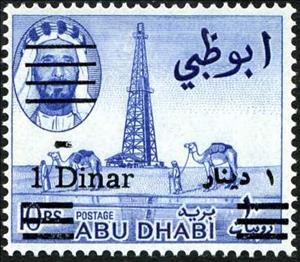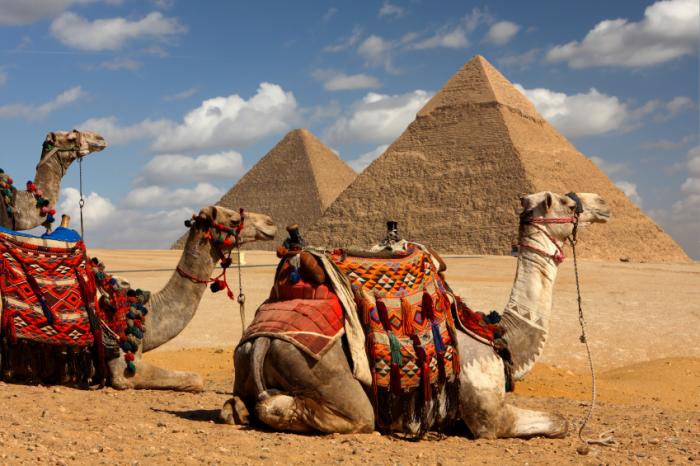Stamp: Oil rig and camels, surcharged (Abu Dhabi 1966)
Oil rig and camels, surcharged (Abu Dhabi 1966)
01 October (Abu Dhabi ) within release Sheikh Shakhbut bin Sultan pictorials - New curren goes into circulation Stamp Oil rig and camels, surcharged face value 1 United Arab Emirates dinar
| Stamp Oil rig and camels, surcharged in catalogues | |
|---|---|
| Michel: | Mi: AE-AB 25I |
| Stanley Gibbons: | Sg: AE-AB 25a |
Stamp is horizontal format.
Short extra bar below portraitStamp Oil rig and camels, surcharged it reflects the thematic directions:
A camel (from Latin: camelus and Greek: κάμηλος (kamēlos) from Ancient Semitic: gāmāl) is an even-toed ungulate in the genus Camelus that bears distinctive fatty deposits known as "humps" on its back. Camels have long been domesticated and, as livestock, they provide food (camel milk and meat) and textiles (fiber and felt from camel hair). Camels are working animals especially suited to their desert habitat and are a vital means of transport for passengers and cargo. There are three surviving species of camel. The one-humped dromedary makes up 94% of the world's camel population, and the two-humped Bactrian camel makes up 6%. The wild Bactrian camel is a separate species and is now critically endangered.
An oil well is a drillhole boring in Earth that is designed to bring petroleum oil hydrocarbons to the surface. Usually some natural gas is released as associated petroleum gas along with the oil. A well that is designed to produce only gas may be termed a gas well. Wells are created by drilling down into an oil or gas reserve and if necessary equipped with extraction devices such as pumpjacks. Creating the wells can be an expensive process, costing at least hundreds of thousands of dollars, and costing much more when in difficult-to-access locations, e.g., offshore. The process of modern drilling for wells first started in the 19th century but was made more efficient with advances to oil drilling rigs and technology during the 20th century.


